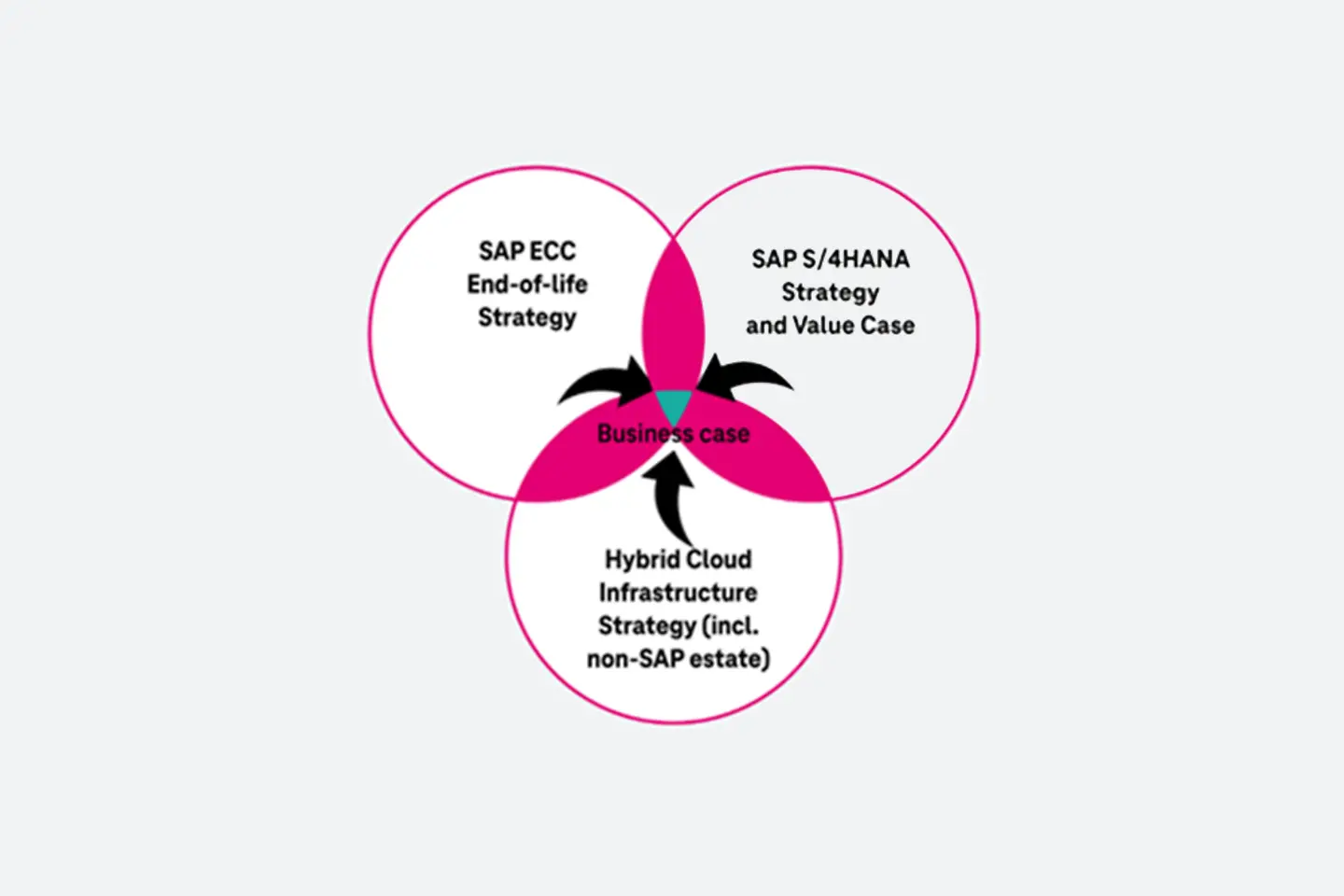
SAP's deadline for ending ECC support is approaching, yet many businesses still hesitate to move to S/4HANA. While some have started their transformation journey, others risk falling behind as competitors embrace AI-driven efficiencies and cloud innovation. The question remains: How long can you wait before taking action?
In 2022, we at T-Systems conducted a Nordic market research study with IDC on the appetite and status of transforming legacy SAP ECC platforms to S/4HANA. It was interesting to investigate, as SAP had announced the support for the ECC platform would expire in 2027. Hence, businesses were at risk of running critical ERP processes on an outdated platform if no actions were taken. The research was based on responses from 400 enterprises and concluded that many considerations were being taken, but few had initiated their transformation projects. One interesting observation was that very few had considered moving their SAP environments into the cloud.
Fast-forward to 2025. With a glance in my eyes, I could claim that the conclusions of our study three years ago remain valid. Indeed, things have moved on. RISE has entered the agenda and is an inevitable topic when considering transforming your SAP landscape into the cloud.
Around 24% of SAP ERP customers will still use the legacy ECC platform for key business areas in 2030.
This is very interesting as the mainstream support for ECC, which includes product updates and patches, still ends in 2027. However, today, SAP offers a premium to extend the support until 2030, and they recently announced a new extended support model for ECC users, enabling support and maintenance until 2033, against committing to a S/4HANA upgrade no later than 2030.
The finish line seems to be a moving target, but it has the same end goal: moving to S/4HANA. The question is, then, how long will you wait before making the decision to upgrade your SAP environment?

More corporations are moving towards S/4HANA, but not at the anticipated pace. Hence, SAP needs to extend deadlines.
Calum McDonald, principal analyst in Gartner's Sourcing, Procurement, and Vendor Management organization, has stated that many corporations struggle to see the business case and leave behind stable environments in which a significant amount of investment has already been made.
SAP has, in recent times, been pushing the RISE agenda. The standardized t-shirt model doesn’t necessarily fit all corporations. In particular, those who have invested much time and capital into building and customizing their ECC platforms. Furthermore, the option for running ERP systems on hyperscaler platforms might not be the most financially beneficial nor the right option for privacy reasons, just as others are neglecting to use SAP’s own cloud solutions to avoid complete vendor lock-in.
SAP is providing a compelling argument for moving to S/4HANA as innovations, including use of AI, will only be available on their modern platform. At T-Systems, we have heard arguments from corporations that they don’t need the innovation SAP provides.
I had an interesting observation during a large EMEA SAP conference in Copenhagen recently. During a keynote, we were inspired by a concrete finance use case, where the in-build AI agent on S/4HANA was used. In the scenario, the finance department received a notification from a customer regarding an incorrect invoice. In the scenario the customer had rented tool supplies. To investigate the rightfulness of the customer claim and if the invoice truly was incorrect, an accountant would spend much time on calling back to further understand the situation, contacting the logistic company, the warehouse from where the goods were packed and the coordination between all stakeholders.

On stage, it was illustrated in real-time how the AI agent handled the claim, contacted all stakeholders, found the root-course and even provided a drafted email to the accountant with a compensation suggestion for the customer’s next rental. All this was done in minutes!
It was very evident there are many efficiency gains to capture daily. It simply means, you can either do more with the same resources or the same with less. Now, think about if your competitors are obtaining these efficiency gains and you are not. Is this sustainable for your business in the long run?
Deutsche Telekom, the world’s largest telecommunication company, is moving to SAP RISE. Over the coming years the leading telco will migrate over 300 ERP systems to the cloud. A large and complex project. Why?
Joop Jansen, SVP Finance, Deutsche Telekom IT, explains the company was pursuing a kick the can down the road strategy – waiting to act. However, new possibilities emerged for Deutsche Telekom. Joining forces with T-Systems, the telco has adopted a hybrid cloud solution to their RISE strategy and are moving workloads at a pace that fits the organization, while keeping some applications outside of the RISE contract. The solution enables Deutsche Telekom to meet their significant security and privacy requirements.
You can display all external content on the website at this point.
I agree that personal data may be transmitted to third-party platforms. Read more about this in our privacy policy.
Learn more in the interview with Joop Jansen, where he also shares advice with those considering moving RISE with SAP.

All this takes me back to the beginning of this blog. Our market research in 2022 and the report’s conclusions are still valid no matter which deadline you are aiming for. When deciding on modernizing your SAP environment, the focus is often on the end state. However, to ensure a successful SAP transformation to S/4HANA, you will need to develop not one, but three strategies to build the business case.
Combining the three strategies is fundamental to building the business case for your SAP transformation.
There are indeed many considerations and several options to choose from when it comes to your SAP transformation. One thing is for certain: the clock is ticking. How long will you wait?
The images used in this blog have been created with AI.